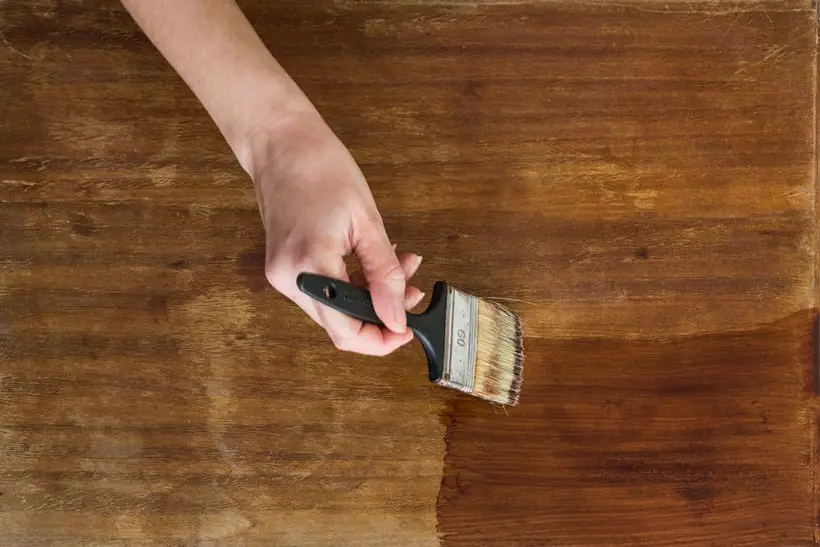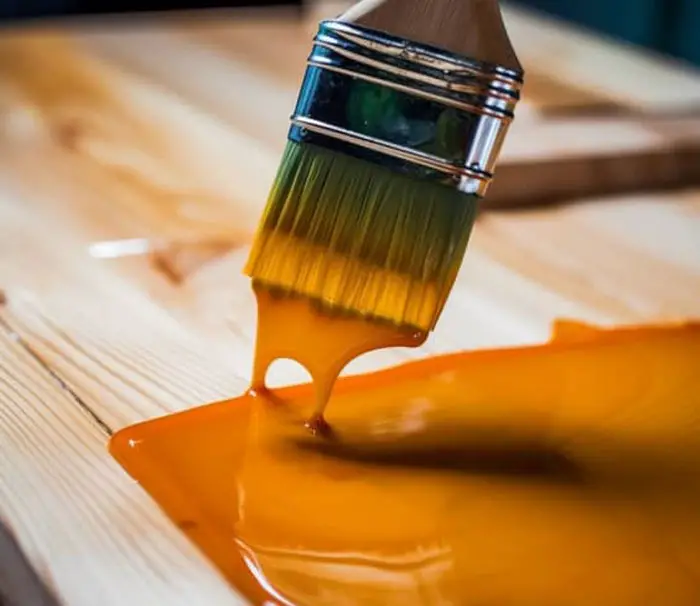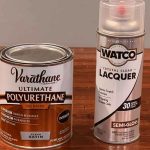Can You Put Polyurethane Over Polycrylic? Find Out The Best Finishing Options
Are you looking to enhance the durability and beauty of your furniture or wooden surfaces? If so, you may be wondering if it’s possible to apply polyurethane over polycyclic.
So, can you put polyurethane over polycrylic? Well, the good news is that you can! Polyurethane is a popular finish that provides excellent protection against wear and tear, while polycyclic is known for its smooth, glossy finish. By combining these two finishes, you can achieve the best of both, the durability of polyurethane and the aesthetic appeal of polycyclic.
In this article, we will explore the compatibility of polyurethane and polycyclic, the steps involved in applying them together, and some tips to achieve the best outcome. So, let’s dive in and discover how you can give your furniture a stunning and resilient finish!
Can You Put Polyurethane Over Polycrylic?
Yes, you can overcoat a polycrylic with polyurethane. Polyurethane and polycrylic are both wood finish products that can be used as topcoats, but they have different compositions and characteristics. Moreover, polyurethane is composed of polymers and urethanes, providing a hard and durable protective surface.
There are two types of polyurethane: water-based and oil-based. Water-based polyurethane is popular among woodworking hobbyists due to its quick drying time, while oil-based polyurethane offers good protection but takes longer to dry. On the other hand, polycrylic is similar to polyurethane but has a different composition.
Polyurethane can also be applied over acrylic paint, as long as the paint is completely dry. However, while polycrylic can be applied over latex paint, it may result in dripping, running consistency, uneven strokes, and fast drying.
Overall, polycrylic is recommended for adding gloss and shine to paint, as it does not alter the color and is easy to clean. So, you can put polyurethane over polycrylic by following the proper application techniques and considering the compatibility of the two products.

The Difference Between Polyurethane and Polycrylic
As a woodworker, you may be wondering if you can apply polyurethane over an existing coat of polycrylic. To determine if this is possible, you need to understand the difference between these two popular sealants.
- Polyurethane is an oil-based sealant, while polycrylic is a water-based acrylic sealant.
- Polyurethane penetrates the wood and creates a durable, abrasion-resistant finish. It is a set of solvents for cleanup. Thus, it provides superior protection but has strong fumes, takes longer to dry, and requires solvents to clean up.
- Polycrylic creates a protective coating on top of the wood. It has a low odor, dries quickly, and cleanses with soap and water. However, it may not penetrate as deeply and be less durable.

If you have already applied polycrylic and want to use polyurethane now, there are a few factors to consider:
- Polycrylic seals the wood, so the polyurethane may not properly bond. Lightly sand the polycrylic coat to provide a tooth for the polyurethane to grip.
- Polyurethane is solvent-based, so it can soften the acrylic and cause cracking. Apply a coat of dewaxed shellac between the polycrylic and polyurethane to prevent this reaction.
- Consider if another coat of polycrylic will provide sufficient protection before switching to polyurethane. An extra coat of the same product is the safest approach.
In summary, while polyurethane and polycrylic each have their merits, for the best results, it is not advisable to apply these products in combination on the same wood surface. If you do proceed, take proper precautions to ensure good adhesion and compatibility.
Here is a youtube link to understand more precisely.
Pros and Cons of Applying Polyurethane Over Polycrylic
Polyurethane over polycrylic provides significant benefits regarding durability, appearance, and cost. However, its toxicity is a notable downside. Applying a coat of polycrylic first helps minimize health hazards while still gaining the advantages of a polyurethane topcoat.
With the proper safety precautions taken, polyurethane over polycrylic can produce an attractive, long-lasting finish.
Durability
Polyurethane provides a durable, protective finish that is resistant to scratches, stains, and water damage when applied over polycrylic sealers. Since polyurethane creates a harder, plastic coating, it helps prevent dents, dings, and other surface damage to the wood.
The additional layer of protection from polyurethane results in a finish that lasts significantly longer than polycrylic alone.
Appearance
Polyurethane enhances the natural beauty of the wood grain by providing a glossy, high finish. It results in a smooth, glass-sheen-like surface that magnifies the wood’s natural pattern.
The Development of Polyurethane also comes in satin and matte sheens for those wanting a more natural, matte appearance. The polycrylic base coat helps prevent the yellowing that can occur with polyurethane.
Toxicity
While polyurethane produces a durable finish, it releases volatile organic compounds (VOCs) that can be hazardous to one’s health and the environment. It has a strong odor that can irritate the eyes, nose, and throat.
Proper ventilation and protective equipment like gloves, goggles, and respiratory masks should be used. In contrast, water-based polycrylic VOCs have almost no odor.
Cost
Polyurethane typically costs slightly more than polycrylic sealers. An additional coat or two of polyurethane is required to achieve an equally protective finish, increasing the total cost. However, due to its durability, polyurethane may save money in the long run.
Tips for Applying Polyurethane Over Polycrylic
To apply polyurethane over polycrylic, there are a few tips to keep in mind for the best results.

Properly Prepare the Surface
Before applying the polyurethane, ensure the polycrylic layer is fully cured as directed by the product instructions, typically in 2 to 3 weeks. Lightly sand the polycrylic coat with fine-grit sandpaper (220 grit or higher) to provide a tooth for the new finish to adhere to. Wipe away dust with a tack cloth.
Choose a Compatible Polyurethane
Select a polyurethane finish that is oil-based and specifically meant to bond with acrylic sealers like polycrylic. Water-based polyurethanes can work too but may require an adhesion promoter to bond strongly. Test in an inconspicuous area first to check the adhesion.
Apply Thin Coats
Apply 2 to 3 thin coats of polyurethane, waiting at least 2 hours between coats. Thin coats will dry more evenly and quickly, reducing the chance of drips or brush marks.
Use the Proper Applicator
For the best results, use a higher intercoat adhesion. Quality natural bristle brush to apply polyurethane. Foam brushes can leave air bubbles, while polyurethane rollers may leave an uneven, stippled finish.
Provide Adequate Ventilation and Curing Time
Polyurethane releases strong fumes as it dries, so work in good flames. Wait at least 24 to 48 hours before exposing it in a ventilated area away from open-ish to moisture or abrasion.
Full cure can take 7 to 30 days, depending on the product and humidity. Place furniture sliders, felt pads, or other protection under the piece during this time to prevent sticking.
Following these tips will help you achieve an attractive, durable finish by successfully applying polyurethane over polycrylic sealant. Take your time and pay close attention during the application process for professional-looking results.
If you’re wondering about using polyurethane over surfaces previously finished with polycrylic, our article on how to get bumps out of polyurethane finish might provide insights that could help you achieve a smooth and flawless result. Additionally, if you’re considering adding stain to polyurethane for a customized finish, our guide on can you add stain to polyurethane is here to offer guidance. We understand the importance of achieving the best finishes and addressing specific application challenges, and our comprehensive resources are designed to help you navigate and make informed choices for your woodworking projects.FAQs
In this FAQs section, we will discuss the common questions related to Polyurethane and Polycrylic.
Q: Is polyurethane better than polycrylic?
Both polyurethane and polycrylic are effective protective finishes, but they have their unique characteristics and applications. Polyurethane offers excellent durability and can withstand harsh conditions. While polycrylic has a fast-drying and low-odor formula, making it ideal for interior projects.
Q: Which is easier to apply, polyurethane or polycrylic?
Polyurethane is often easier to work with than polycrylic, which might be attributed to the greater viscosity of polyurethane.
Q: Can you put polyurethane over a water-based finish?
Yes. Once the initial coating has fully cured, which usually takes between thirty and sixty days, flooring wholesalers and seasoned floor finishers concur. And that it is possible to recoat water-based poly with oil-based.
Conclusion
So, can you put polyurethane over polycrylic? The answer is yes. When combined with polycyclic, it creates a finish that is tougher than ever and more attractive than ever! However, it’s important to remember that polyurethane and polycyclic aren’t going to work well together if you try to apply them one after the other.
If you want to make the most of this beautiful combination, it’s best to wait a few hours before applying it. Now that you know how to get the best possible result from this combo, you can confidently apply these two finishes to your home decor!




